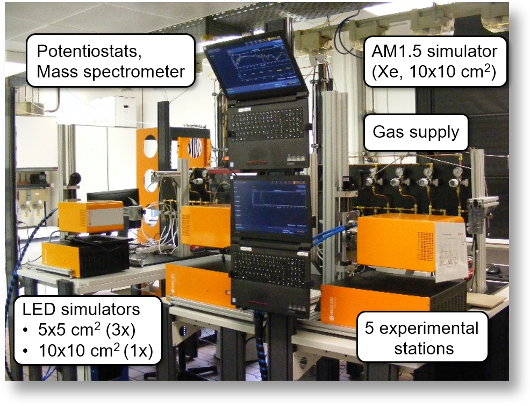Influence of the processing parameters on atomic layer deposited TiO2 protection layers for III-V photocathodes for water splitting
The aim of my Master’s Thesis is the development and photoelectrochemical characterization of titanium dioxide (TiO2) protection layers for water-splitting III-V/Ge absorbers via atomic layer deposition (ALD). While the primary purpose of such layers is to prevent (photo-)corrosion of the highly efficient light absorbers in the electrolyte, they must also facilitate electronical passivation, optical transparency, and maintain charge transfer for the desired electrochemical reactions. ALD allows a controlled deposition of ultra-thin, high quality, and defect-free films on the (sub-)nanometer scale to meet the desired requirements.
The challenge lies in understanding the influence of different processing parameters on the protective layers to develop a process that balances all requirements to an optimized performance. In my studies I use TDMAT as a Ti precursor and analyze the influence of post-deposition annealing and different ALD-oxidants on the film quality, crystallinity, and electronic alignment using various techniques including AFM, XRD, and XPS/UPS. Ultimately, the performance of the films is evaluated in photoelectrochemical experiments and long-term stability tests to find possible bottlenecks (e.g., photovoltage losses, degradation) and eventually develop a stable coating. With the gained knowledge I contribute to the application of protective coatings for a large-scale demonstrator in the H2Demo project.

